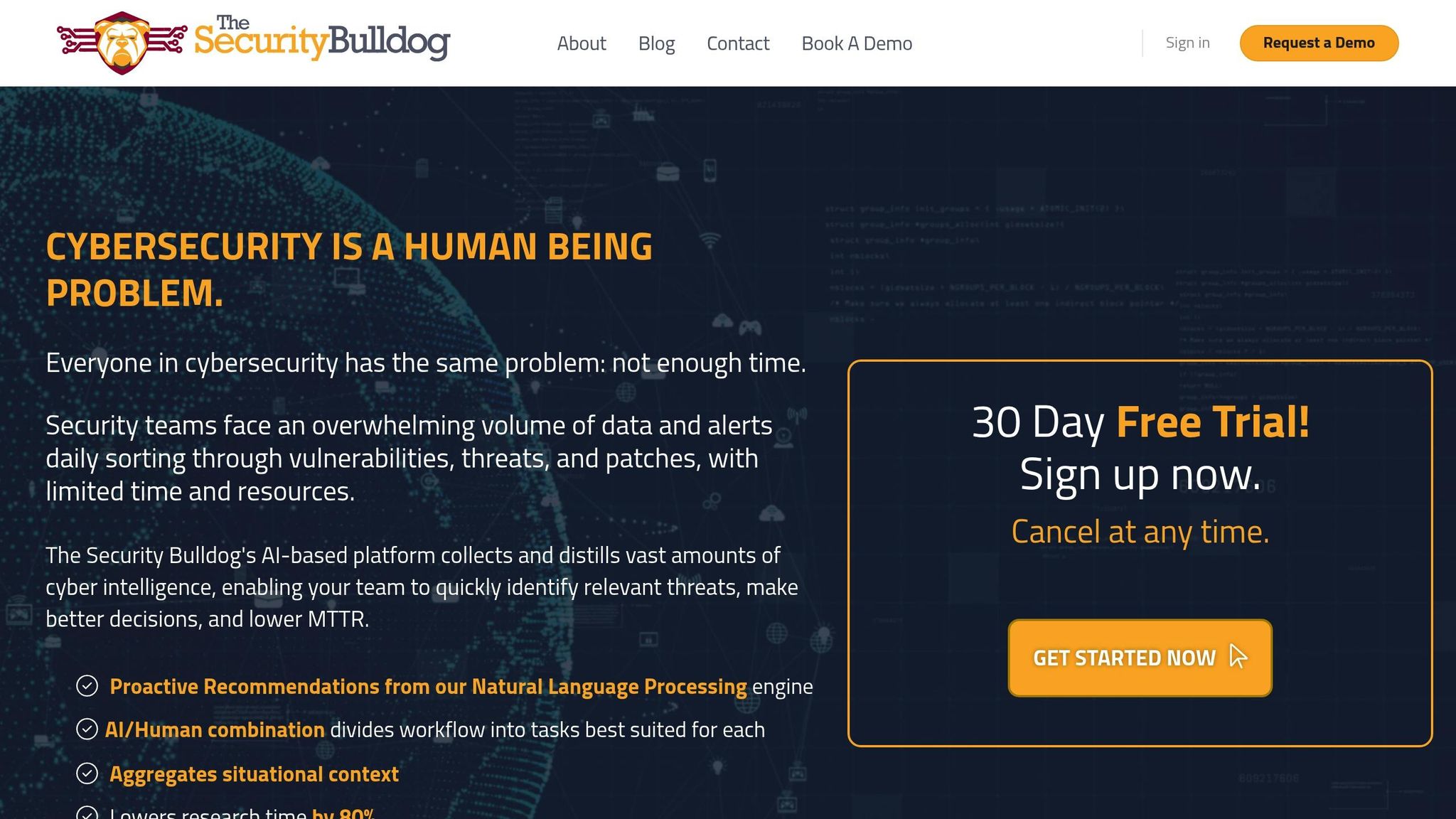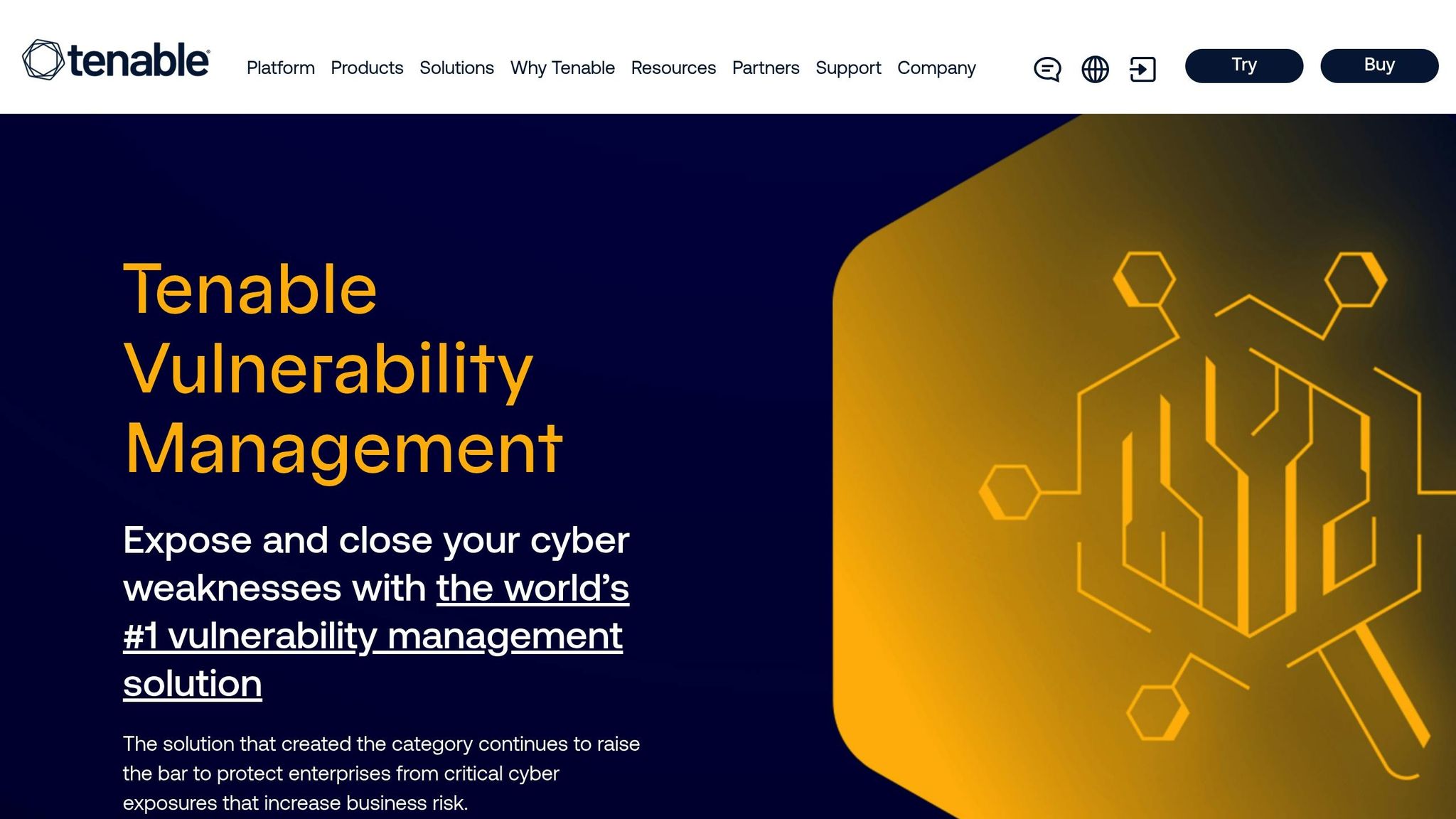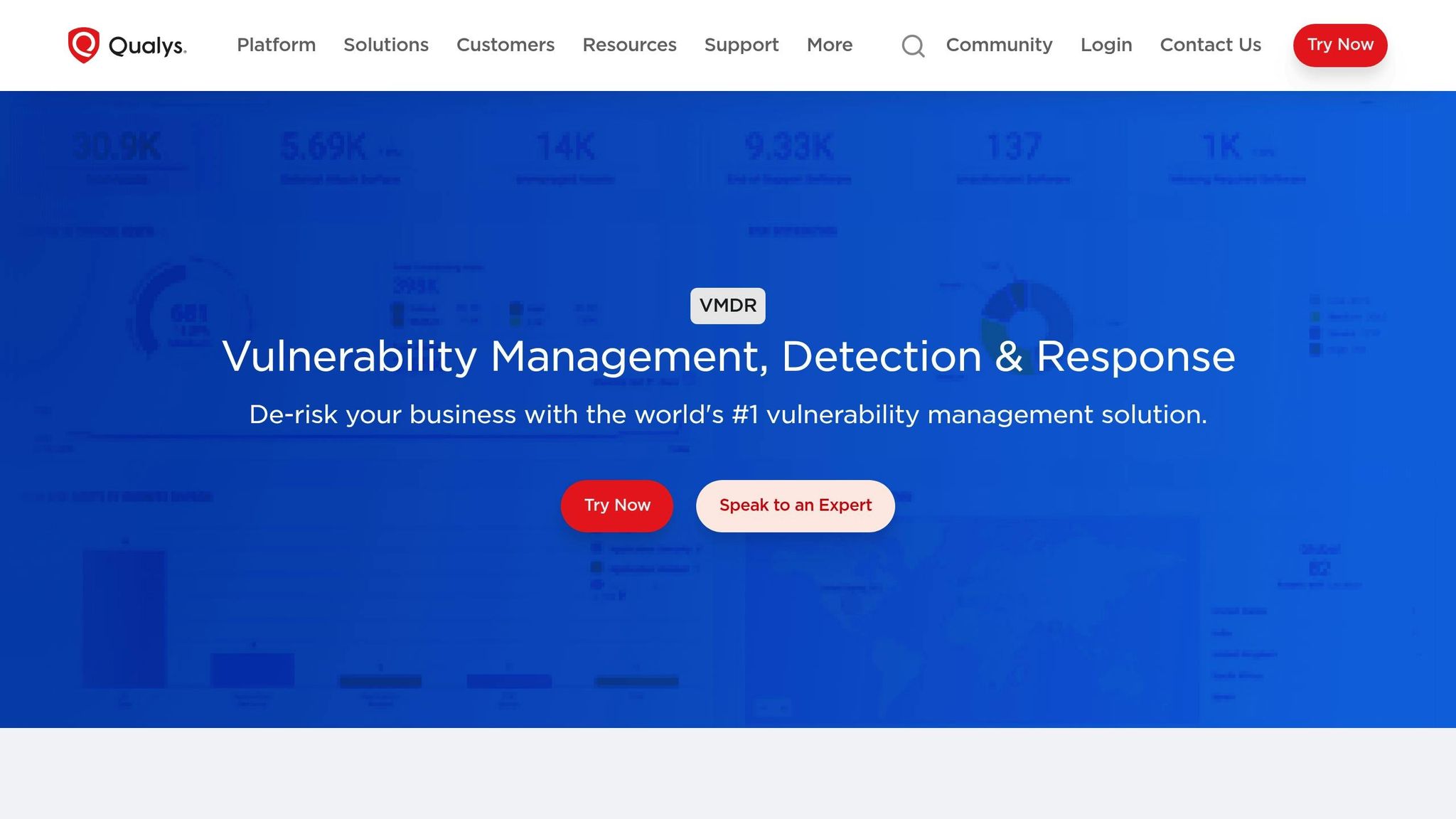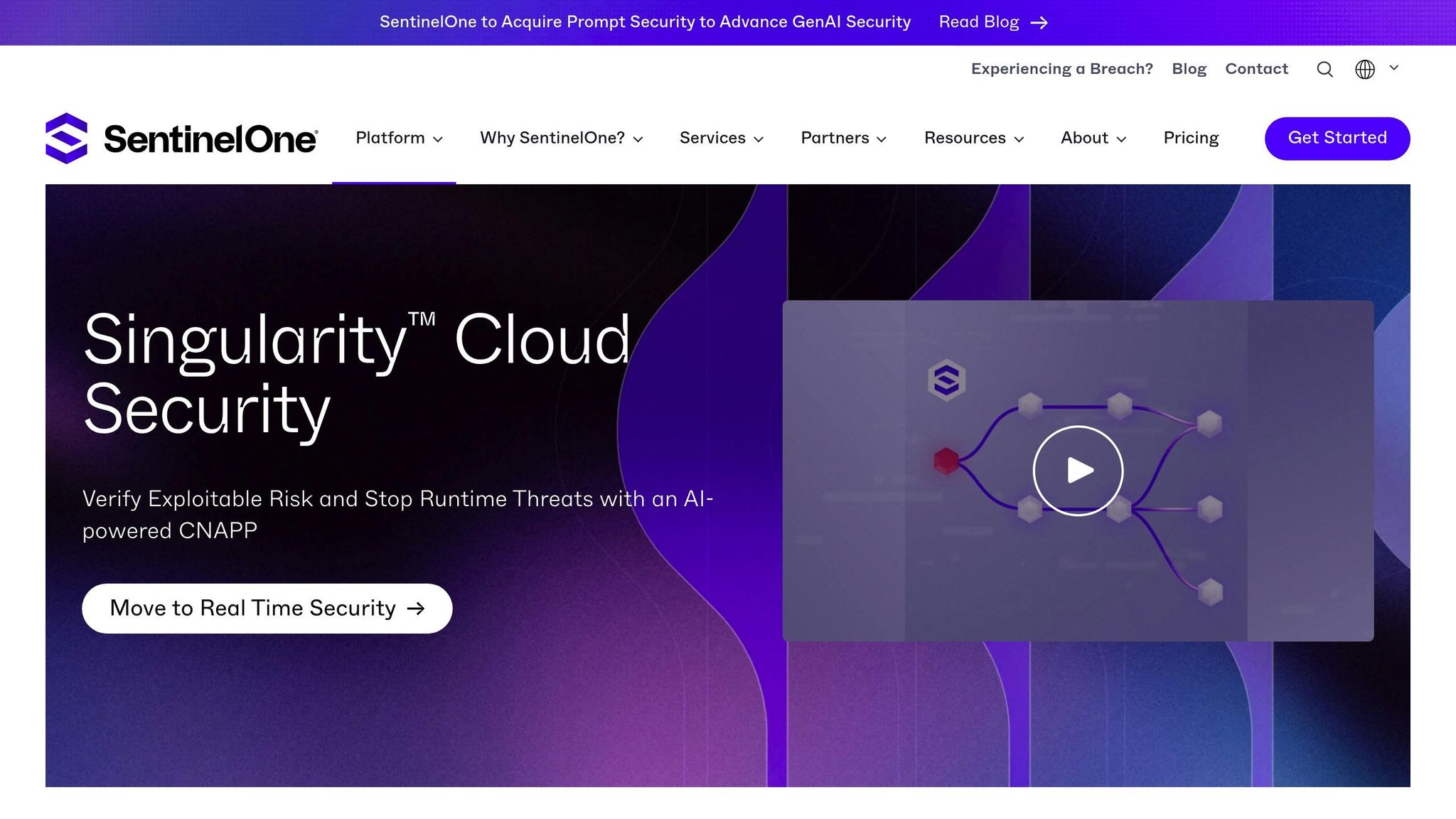AI Tools for Real-Time Vulnerability Scoring
Managing vulnerabilities can overwhelm cybersecurity teams, with hundreds of alerts daily. Not all vulnerabilities are equally risky, and prioritizing them manually wastes time on less critical issues. AI-driven tools now provide real-time vulnerability scoring, offering precise, updated risk assessments tailored to your organization.
Key Insights:
- What It Is: Real-time vulnerability scoring dynamically updates risk levels based on factors like active exploitation, asset importance, and threat intelligence.
- How AI Helps: AI processes vast data sources (e.g., exploit databases, dark web activity) to predict exploitation likelihood and prioritize vulnerabilities.
- Why It Matters: Automation reduces delays, helping teams focus on high-risk issues while integrating seamlessly with security tools like SIEM and SOAR.
Top Tools Mentioned:
- The Security Bulldog: Uses NLP to analyze open-source intelligence and prioritize risks. Pricing starts at $850/month for up to 10 users.
- Tenable.io: Offers predictive prioritization for exploitation risks.
- Qualys VMDR: Focuses on business-context risk assessments and automated remediation.
- SentinelOne Singularity Cloud Security: Designed for dynamic cloud environments with automated threat containment.
These tools streamline workflows, improve response times, and help organizations stay ahead of evolving threats.
The Security Bulldog: AI-Powered Vulnerability Scoring Features

The Security Bulldog Platform Overview
The Security Bulldog redefines how real-time vulnerability scoring works by using a proprietary NLP engine. This engine processes open-source cyber intelligence from various sources like the MITRE ATT&CK framework, CVE databases, podcasts, and threat news, turning it into actionable insights.
What sets The Security Bulldog apart is its ability to transform unstructured data into meaningful intelligence. Instead of just gathering information, its NLP engine analyzes context and maps relationships between threats. This helps security teams not only identify vulnerabilities but also prioritize those that pose the most significant risks to their unique environments.
This capability hasn’t gone unnoticed. AIChief gave the platform an overall rating of 4.7 out of 5, with user-friendliness and accessibility also scoring 4.7 out of 5 each. These high marks highlight its intuitive design, which allows users to get started without any specialized training. Below, we dive into the platform’s standout features that make it a game-changer.
Core Features of The Security Bulldog
The Security Bulldog’s strength lies in its combination of features designed to deliver in-depth threat intelligence and streamline workflows. Here’s what it offers:
- Custom Feeds: Organizations can create tailored intelligence streams based on roles, industries, or specific priorities, ensuring the most relevant data is front and center.
- Seamless Integration: The platform connects effortlessly with existing security tools like SOAR (Security Orchestration, Automation, and Response) and SIEM (Security Information and Event Management) systems. This ensures vulnerability scores and insights are integrated directly into established processes.
- Collaboration Tools: Teams can annotate threats, share insights, and coordinate responses within the platform. By reducing information silos, these tools speed up decision-making and strengthen team efficiency.
According to AIChief, the platform’s ability to cut research time by up to 80% is a standout feature, making it a must-have for modern security teams.
The platform also excels in risk prioritization, going beyond traditional CVSS metrics. It incorporates real-time threat activity, exploit availability, and an organization’s specific context to provide a more accurate assessment of risk.
The Security Bulldog Use Cases
With its robust features, The Security Bulldog simplifies vulnerability management in practical, real-world settings. Its continuous monitoring of open-source intelligence delivers detailed vulnerability profiles, complete with exploitation trends and recommended actions. This eliminates the need for hours of manual research across multiple sources.
The platform’s automation capabilities take things further by initiating patch workflows and providing prioritized action items tailored to each organization’s environment. This ensures faster threat detection and response, helping teams stay ahead of potential risks.
To make the platform accessible to all, flexible pricing plans are available for both small teams and large enterprises. Every plan includes 24/7 premium support, ensuring users can fully leverage the platform’s capabilities from the start.
Mastering Vulnerability Prioritization: Enhance Your Security with Advanced Tools and Technology
Top AI Tools for Real-Time Vulnerability Scoring
When it comes to real-time vulnerability scoring, several AI-powered tools stand out. These solutions bring advanced scanning, automation, and data-driven insights to help security teams stay ahead of emerging threats.
Tenable.io

Tenable.io shines with its continuous asset discovery and vulnerability assessment features. By leveraging machine learning, it prioritizes vulnerabilities based on factors like threat context, asset importance, and exploit availability. This ensures teams focus their efforts on the most critical risks.
Its Predictive Prioritization feature is particularly noteworthy. Using data science and real-time threat intelligence, it forecasts the likelihood of specific vulnerabilities being exploited. This means security teams don’t just see what vulnerabilities exist – they know which ones need immediate attention in their unique environment.
Tenable.io also integrates seamlessly with tools like SIEM, ticketing systems, and patch management platforms. This allows vulnerability scores and remediation guidance to flow directly into existing workflows, eliminating the need to juggle multiple interfaces.
Next up, Qualys VMDR offers a comprehensive approach to detection and remediation.
Qualys VMDR

Qualys VMDR takes vulnerability management a step further with its TruRisk feature, which uses machine learning to assess vulnerabilities in a business context. Instead of relying solely on CVSS scores, TruRisk considers factors like asset importance, the current threat landscape, and the likelihood of exploitation. This gives security teams a clearer picture of both technical severity and potential business impact.
The platform’s automation capabilities are equally impressive. It doesn’t just detect vulnerabilities – it can automatically trigger patch deployments, schedule maintenance tasks, and track remediation progress across the infrastructure. This level of automation significantly reduces the time it takes to address vulnerabilities, shrinking the window of opportunity for attackers.
For organizations operating in cloud environments, SentinelOne Singularity Cloud Security offers a tailored solution.
SentinelOne Singularity Cloud Security

SentinelOne Singularity Cloud Security is designed for real-time detection and response in dynamic cloud environments. Traditional methods often fall short in these settings, but SentinelOne uses behavioral AI to correlate vulnerability data with runtime behavior, delivering immediate, context-aware scoring and automated containment.
What sets it apart is its hyperautomation capabilities. The platform can automatically contain threats, isolate affected systems, and kick off remediation workflows – all without human intervention. This speed is essential in fast-changing cloud environments, where traditional scanning methods might miss temporary or ephemeral resources.
sbb-itb-9b7603c
AI Tool Comparison for Real-Time Vulnerability Scoring
Feature Comparison Table
Selecting the right AI-powered vulnerability scoring tool means finding one that matches your organization’s specific security needs. Here’s a closer look at the features of The Security Bulldog:
| Tool | AI Capabilities | Real-Time Scoring Features | Key Integrations | Pricing Range | Primary Strengths |
|---|---|---|---|---|---|
| The Security Bulldog | Proprietary NLP engine, semantic threat analysis | Real-time CVE scoring, MITRE ATT&CK integration | SOAR, SIEM, custom API integrations | $850/month ($9,350/year) for up to 10 users | Open-source intelligence consolidation |
The pricing structure is straightforward, though costs may increase with larger deployments, depending on the number of users and assets.
How to Choose the Right Tool for Your Organization
When it comes to real-time vulnerability scoring, the quality of data integration and automation is crucial. Tools that consolidate open-source intelligence and provide accurate, actionable insights can make a significant difference in your security posture.
Scalability is another key factor. Your chosen platform should grow alongside your infrastructure, ensuring it remains effective as your organization expands.
Integration capabilities are just as important. A tool like The Security Bulldog, with robust API connectivity, ensures that vulnerability data integrates smoothly into your existing workflows, whether you’re using SOAR, SIEM, or other custom systems.
Automation can help reduce the daily workload, but it’s essential to configure these features properly to avoid disruptions during critical business hours. Additionally, consider the total cost of ownership. This includes not just the subscription fee but also expenses for training, integration, and ongoing maintenance. Compliance support for frameworks like NIST, SOC 2, or PCI DSS is another factor that can save time and reduce stress during audits. With its predictable pricing, The Security Bulldog offers a clear cost structure, making it easier to budget for growing security needs.
Lastly, think about your team’s expertise. Automation can simplify operations, but platforms that emphasize intelligence gathering and analysis are particularly valuable for teams with strong analytical skills. These tools can provide deeper insights into threats, empowering strategic decision-making and enhancing your organization’s overall security strategy.
Conclusion
Key Takeaways
Real-time vulnerability scoring is changing the game in cybersecurity, moving the focus from reacting to threats to actively preventing them. Instead of relying on periodic scans, organizations can now benefit from continuous, real-time analysis, allowing them to stay ahead of potential risks.
In a world where exploits can happen in less than a week and zero-day threats are sold on the dark web, speed is critical. Occasional assessments simply don’t cut it anymore. Organizations need to act quickly to protect themselves in today’s fast-moving threat environment.
Platforms like The Security Bulldog take this to the next level by using proprietary NLP to turn open-source intelligence into actionable insights. These tools integrate seamlessly with SOAR and SIEM systems and come at an accessible price point ($850/month for up to 10 users). They not only help meet regulatory requirements but also offer user-friendly dashboards that enable decision-makers to act with confidence.
Real-time scoring also simplifies the challenges of managing modern infrastructures, such as ephemeral containers and dynamic cloud environments. As AI continues to advance, it promises even better tools for predicting and responding to threats.
The Future of AI in Cybersecurity
Continuous real-time scoring is just the beginning of AI’s expanding role in cybersecurity. As these systems evolve, we can expect more advanced capabilities for predicting threats and automating responses.
By reducing the time attackers have to exploit vulnerabilities, organizations can shift from constantly putting out fires to building a proactive and resilient defense strategy. This approach prioritizes fixes based on real-world risks and their impact on business operations.
With the constant pressure to maintain security and system uptime in the face of persistent threats, real-time scoring has become essential. Adopting these innovations not only helps organizations tackle today’s challenges but also ensures they’re ready to adapt as the cybersecurity landscape evolves.
FAQs
What makes The Security Bulldog unique for real-time vulnerability scoring?
The Security Bulldog takes real-time vulnerability scoring to the next level by using a proprietary Natural Language Processing (NLP) engine. This technology processes and synthesizes open-source cyber intelligence, giving security teams the ability to quickly grasp threats, make smarter decisions, and act more swiftly.
On top of that, it works effortlessly with existing security tools, encourages team collaboration, and delivers curated threat feeds customized to fit specific IT environments. These capabilities make it an effective tool for improving real-time detection, response, and vulnerability management.
What are the benefits of integrating The Security Bulldog with systems like SIEM and SOAR?
Integrating The Security Bulldog with SIEM and SOAR systems offers major perks for cybersecurity teams. For starters, it can slash response times to critical incidents by up to 90% and reduce false positives by 40–60%. That means teams can work more efficiently and accurately when identifying and tackling threats.
On top of that, this integration automates threat analysis, freeing up security teams to concentrate on high-level, strategic tasks. It also speeds up decision-making by providing quicker, data-driven insights. By simplifying workflows and boosting teamwork, The Security Bulldog plays a key role in strengthening your organization’s cybersecurity defenses.
How does real-time vulnerability scoring strengthen an organization’s cybersecurity strategy?
Real-time vulnerability scoring allows organizations to quickly spot, assess, and rank security threats as they arise. By delivering current risk evaluations, it shortens the window attackers have to exploit weaknesses and ensures quicker, more efficient responses.
This method also sharpens decision-making by directing teams toward the most pressing risks. The outcome? Stronger defenses, reduced potential for damage, and a proactive stance against ever-changing cyber threats.